Sunday April 21, 2019
We do not stir until after 1000. Last night was a great evening but we are not sure we can stay up like this anymore. Add in the amount of alcohol we drank which has made us crave some food. We start out with the idea of maybe some pizza but as we leave the apartment, we hang a left instead of a right. Pizza was left and now we are thinking we will walk down our street and maybe see a Kebap place. We go past a Take Wok, which is Japanese stir fried noodles, rice, and sushi. Our bodies are thinking greasy stir fried stuff sound really good. However we think Chinese sounds better than Japanese so we walk on. No Chinese to be found so we return and get some stir fried noodles with chicken and vegetables. I get thick, Carol gets thin and yes I am talking about the noodles. We bring it back to our place and it is good and filling. We spend the afternoon getting ready for our departure tomorrow, doing laundry, and writing.
Time flies and we get ready to go to today’s event. The traditional Easter Bullfight. We walk to the metro and get off at the Plaza del Toros. We take some pictures by several bronze statues and then enter the arena. The weather is cloudy, no rain but a cool 55 degrees. We get to sit on stone bench seats. They could have upgraded them to in seat heating but noooo, the only heat here is escaping my butt and being absorbed by the stone.
The arena is pretty cool and we are not sure what to expect. All we know from reading is there are 6 bullfights and they last about 20 minutes or so each. Other than that, we are not in the know as to how the events unfold.
At the start, the matadores come out, along with their entourage including the picadores (on horseback), and the banderilleros who place the banderillas (sharp barbed sticks) into the bull. The Bulls name and weight is announced with a sign and then a bugle begins the fight.
The first bull is heavy, 650 Kg ( over 1400 pounds). He enters the ring and immediately charges a banderilleros who participate before the matador in getting the bull to go in certain directions, especially after the picador enters the ring.
When the picador enters on his horse, he attracts the bull, who then attacks the rider and horse. It is amazing watching how powerful the bull is as he hits the horse and at times lifts it off its feet. The picador uses a lance to stab and cut some of the Bulls neck muscles. They get the bull to attack two different times and do this twice. What about the horses, you ask. Well, they are covered in a padded blanket and also blindfolded as I am sure they would throw the rider a hundred feet if they saw a bull coming at them full force. Before 1930, there was no protection for the horse and they would often be disemboweled, with more horses being killed than Bulls.
After a bit of matador showmanship, the banderilleros come out one at a time and entice the bull to charge them. When the bull does, they attempt to stick two banderillas into the bull. This is meant to enrage the bull and reinvigorate him after the lanced attack from the picador.
The matador than comes out and gets the bull to pass him by using the muleta ( the red cape). The closer he gets the bull to pass him, the more the crowd likes it. It also seems like if he gets the bull to turn and go to his knees, the crowd excites.
Eventually, the matador is handed a steel sword. The intent of the matador is to get into position to thrust the sword into the bull and pierce the heart, aorta, or other major blood vessel. This does not always work as planned. In the end, when the bull goes down, a banderillero puts him out of his misery with a dagger behind the skull to ensure the bull is dead. Some of the pictures in the gallery below are a bit bloody, so if this bothers you, I have given fair warning. We watched all the fights, with the matador being brushed once, another time one was thrown in the air but not gored, and witnessed a bull do a headstand when he flipped over as his horns hit the ground.
We also saw a rare event when one of the Bulls was pardoned. A matador or the crowd can ask the president of the ring to pardon a bull they feel a bull has fought bravely. They did this with one bull and released a bunch of females into the ring so the bull would follow them out. The Bulls wounds will be treated and he will spend the rest of his life as a stud.
There was another thing we saw that we did not know about, when it happened. At the end of one fight the crowd started waving white handkerchiefs and the matador took a victory walk and bows along the way. We learned later that the waving of handkerchiefs is a petition to the president to award the matador an ear of the bull for a great performance. If the president decides it was an exceptional performance, the matador can be awarded two ears. We found the whole experience interesting. Overall, it was not as bloody as we thought it would be and was much more choreographed than we thought. It is a tradition of the country and although there is obviously pain inflicted on the animals, it was interesting to watch. It is amazing to see the tenacity of the Bulls and what they can endure before succumbing. It is a very raw part of strength and nature. Seeing their strength up close, hearing their breath and the sound of the bull hitting the horse left an impression. This is not meant to endorse nor condemn the Spanish tradition, but merely document our observation of it. Madrid has been good to us and tomorrow, our travels head south.
Expenses
Apartment Atocha 88.13E
Breakfast Pastries 1.80 E
Japanese Noodle Lunch from Take Wok 11.40E
Bullfight 61.70E
Bocadillo de Calamares 3E Walked 2 Miles
- Our Matadors
- Donning His Cap
- Madrid Arena
- CNC At Las Ventas
- Outside the Arena
- Bull
- I’m not Scared
- El Toro
- CNC at the Bullfight
- Picadores
- Banderilleros
- Almost Ready
- 1420 Pounds
- Colorful
- Matador
- Some Blood
- This Hurts
- A Pass
- Lifting the Horse
- Spanish Standoff
- Ole
- Different Bull 1200 Pounds
- Bravado
- Bloody Aspect
- Distraction



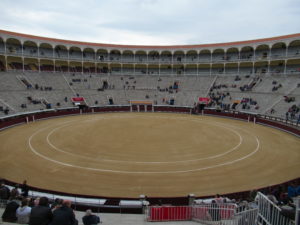

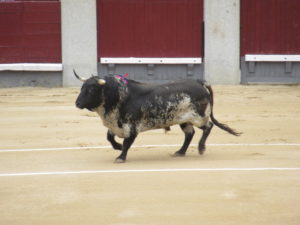
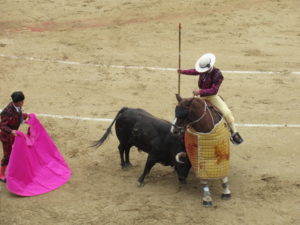


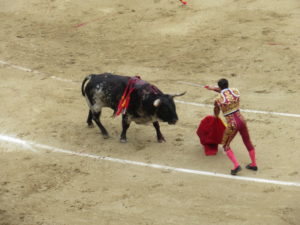
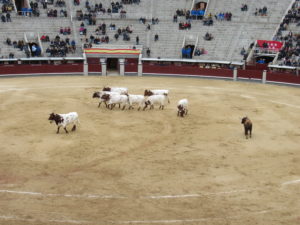
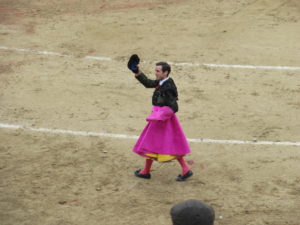
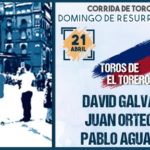


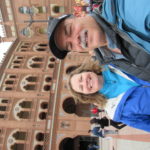
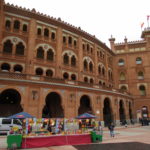
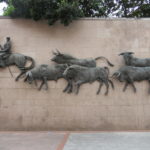

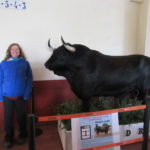
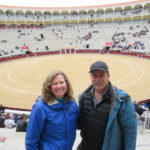
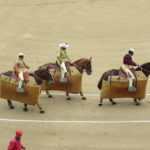


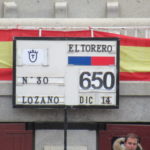

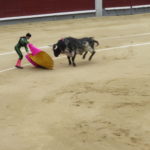
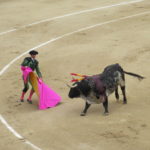
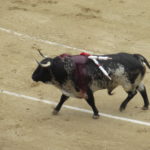



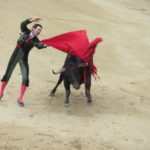
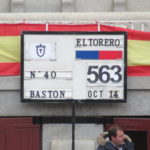
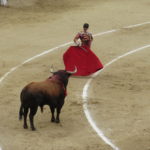
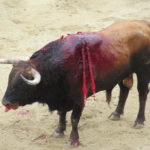
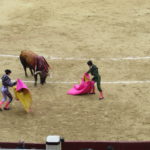
No Comments Yet